Fruit Genetics Friday #4: Transposable Elements and Fruit Color
After I wrote that big long 'Micah Rood' post, I felt a powerful hankering to spend a little time getting back to some down-and-dirty molecular stuff. This is surprising because when I finished my Ph.D. I thought I'd never, ever feel the urge to even look at molecular genetics again. (I actually do occasionally venture over to the molecular side of things in the course of my job, but it's really mostly some one else's job, which is exactly how I like molecular biology to work). But I figure that it's been a long, long time since I wrote a big dense genetics post here (heck, it's been a long, long time since I wrote much of anything here), and if I'm going to even pretend to have this "Fruit Genetics Friday" thing I'm going to have to have something to post some Friday, so I might as well give it a shot. For those of my readers who are intensely non-science and are here merely out of simple love of eating and/or growing fruit, my apologies. Though really, at this stage, you ought to just be pleased to see me posting at all.
Anyway, if you recall (if you don't, feel free to look at it now), back in the discussion of the 'Micah Rood' apple, I mentioned transposable elements as a possible cause of a sudden shift in coloration. Whole books and whole careers have been spent on transposable elements, and I'm hardly an expert, so I'm not going to attempt to burden you with an in-depth discussion of the many types and the different mechanisms involved. The short version is this: Transposable elements are basically freeloaders, little chunks of DNA with the power to move themselves around the genome. Exactly when and why they do this is not always very well understood. Usually they can do this relatively harmlessly--a lot of most higher organisms' genomes are comprised of "junk" DNA (though not of much of it seems to be junk as we once thought). As long as they land somewhere unimportant in the genome, they're pretty harmless. If they land in the middle of a gene, though, they will often disable the gene. If the gene was something important, one may see a pretty stunning change. If the transposable element later "jumps" out of the gene, it may or may not return to normal--frequently the gene won't get repaired correctly, leaving a small "scar" in the sequence at the point from which the transposable element departed. Most genomes are chock-full of transposable elements (by some estimates half of human DNA), but relatively few of them are active, because as they accumulate mutations themselves, the lose the ability to jump. Because particular sequences seem to be especially attractive targets for specific transposons, some species have specific traits that seem particularly prone mutation due to transposon insertion.
Fruit color changes in grape are relatively common (in the sense that lots are known, not that you would likely ever encounter one in your lifetime). Probably the best known are 'Pinot gris' and 'Pinot blanc', both mutations of the venerable 'Pinot noir' variety. (The difference between the two is that 'Pinot gris' is a chimera (like 'Pinot Meunier'), carrying the mutant color gene only in one cell layer, while 'Pinot blanc' has it in all layers). 'Frontenac gris' is a white mutant of 'Frontenac', a relatively recent wine grape release from the University of Minnesota. Both of these cases involve black fruited varieties producing white fruit, but the process can go the other way as well. 'Verdelho roxo', 'Ruby Okuyama' and 'Flame Muscat', are red mutants of the white grapes 'Verdelho', 'Italia' and 'Muscat of Alexandria', respectively. Occasionally the mutant forms of these will revert back to the original color.
The causes of many of these mutations are unknown, but it seems that most white fruited grapes result of a transposable element called Gret1 (Grape retroelement 1). This transposable element is of a type called a retroelement (because it copies itself through an RNA intermediary phase, much like retroviruses, to which they are likely related). Gret1 has a tendency to land next to a gene called VvMybA1. While the gene's function isn't entirely clear, it's part of a class of genes called transcription factors, which regulate the expression of other genes. While Gret1 doesn't actually disrupt the gene itself, it does land in the promoter region and thus may affect the expression of the gene.
It turns out that in nearly all white grapes, both copies of VvMybA1 (one each from the male and female parents) have a copy of Gret1 in their promoters, while black fruited varieties have one or more copy without this insert. Recent red fruited mutants of white varieties appear to have lost one copy of Gret1, apparently leaving an additional bit of genetic detritus behind, partially disrupting the promoter. It's theorized that the white fruit characteristic developed in Vitis vinifera, the European grapevine, only once.
Interestingly (to me anyway), while white-fruited selections of other grape species lack the Gret1-VvMybA1, it does appear that at least a couple may have developed white fruit as the result of Gret1 insertions elsewhere. Both 'Pixiola' (a white fruited selection of V. aestivalis) and 'Bougher' (a white V. riparia) feature Gret1 insertions in the gene F3H. F3H is involved in anthocyanin production, and coincidentally, F3H appears to also be the source of the yellow fruit mutation in the diploid strawberry, Fragaria vesca.
(For you really hardcore genetics types, you can see the relevant papers here, here, and here. (And a bonus strawberry paper here.))
Labels: Fruit Genetics Friday, genetics, grapes, Vitis


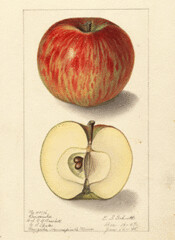
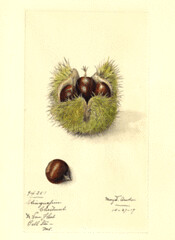
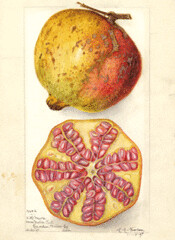
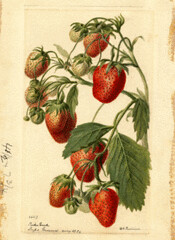
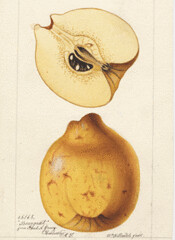



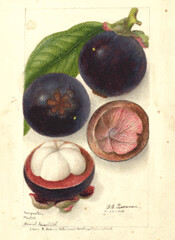
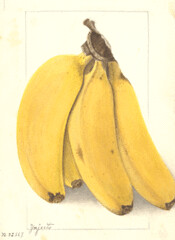

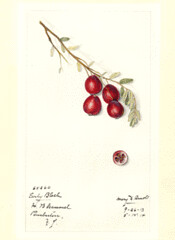
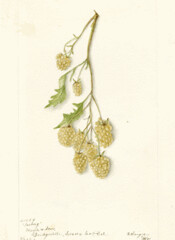
3 Comments:
Just discovered your blog - I love how much you are in to fruit! I blog about a fruit market and am a fellow fruit lover. OK, this message is starting to sound a bit odd...
Anyhow, I'll be back. Keep it up!
Interesting Dr. Lord.
Glad to see you make a post again. I agree with Darby. If you come across something interesting type it out. I'll be sure to read it.
Very interesting that the white "mutation" only came about once. I guess vitis breeders of yore picked up on that mutation quickly then.
It's cool that they can recognize the disruption of transposons at the level that they have done. These transposable elements explain so much of the variation in our fruits and vegetables.
very cool
my new hobby is growing grape from seeds, i have some red globe and a x-mas rose seedlings, but after 14 months, they all died, some might be caused by fungiside, some grew but getting smaller and then stopped growing and died.
right now i have left 3 seedlings from calmeria grape about 2 months old.
i know calmeria is from almeria and sultanina grape.
how many chance i get a complete flower vine and how many chance i get a white or red color grape?
thanks for your help.
santo
Post a Comment
<< Home